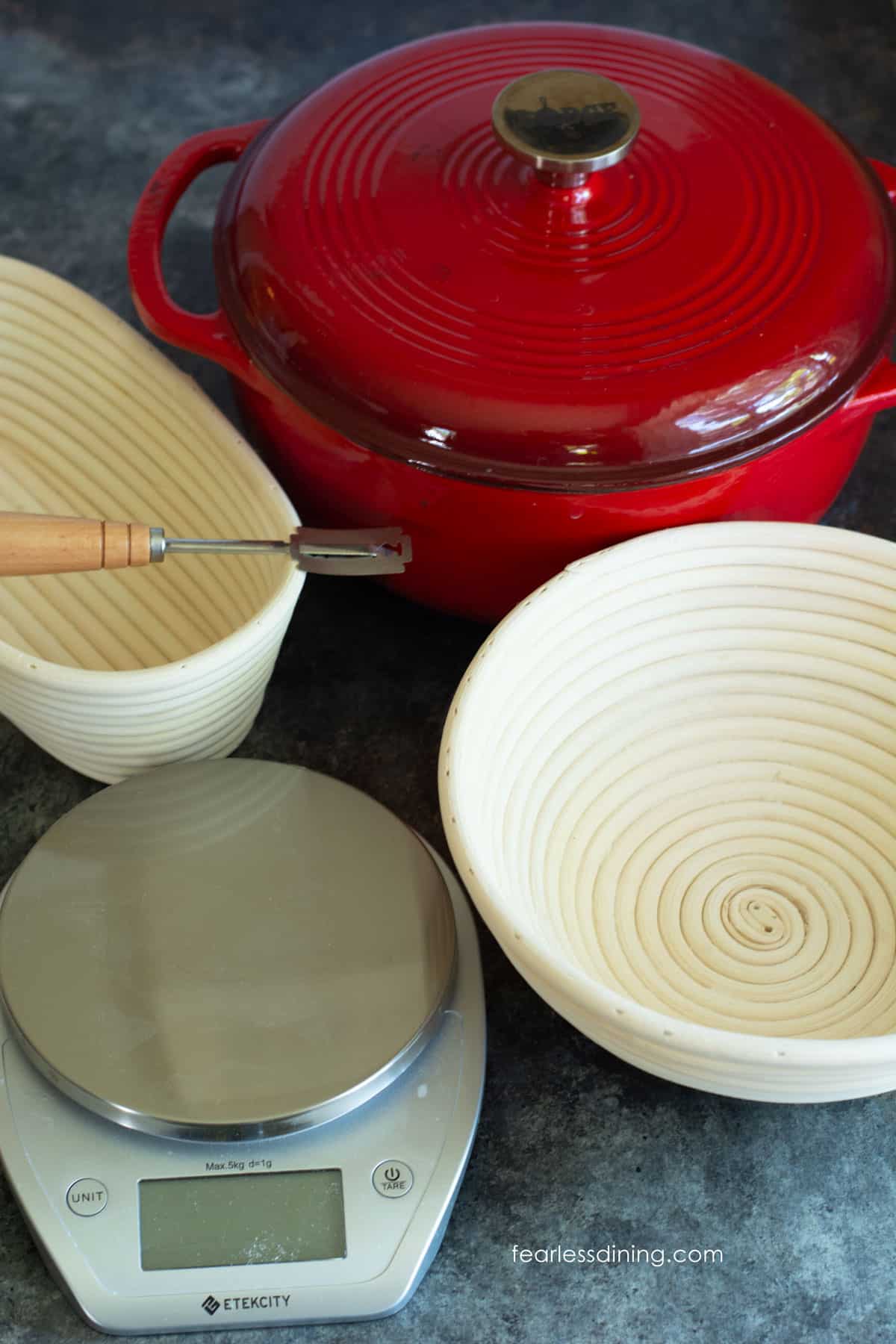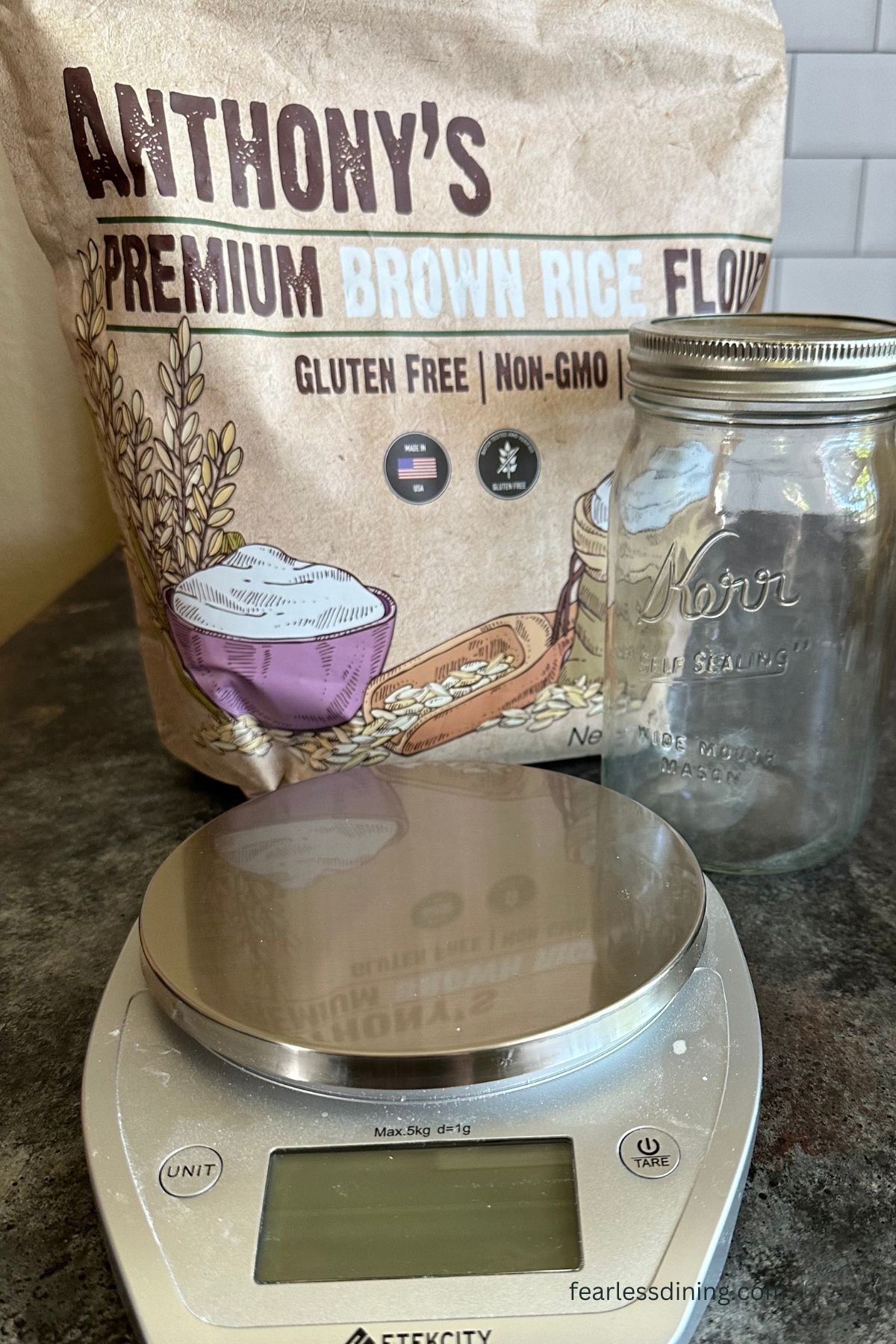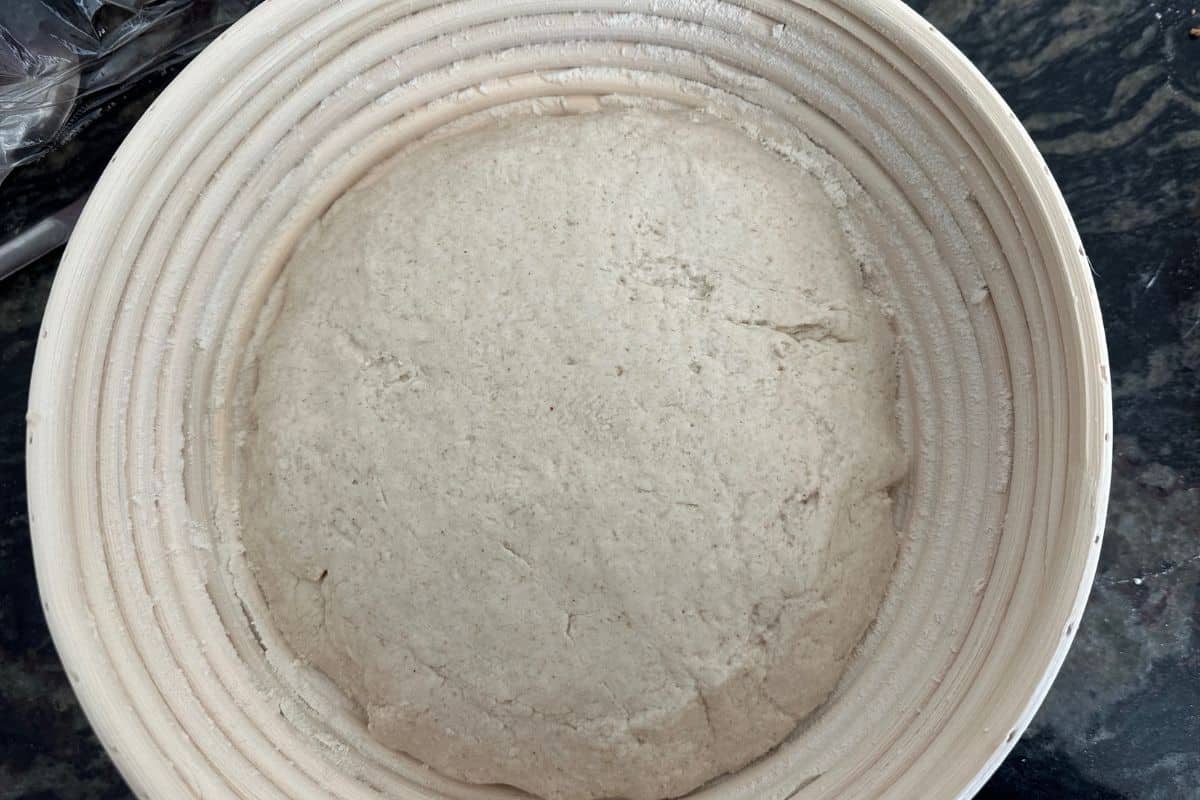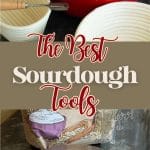If you want to learn how to make gluten-free sourdough, there are a few tools you need to succeed. I am sharing my most used gluten-free sourdough tools and some tips for success. Mastering gluten-free sourdough bread is a rewarding experience that yields incredible-tasting bread.

Sourdough is a trendy way to make bread. It is made from wild yeast that you grow as a sourdough starter. It tastes way better than store-bought bread, and it is fun to make.
My main sourdough recipes are vegan as well as gluten-free, which makes them great for my readers who have a lot of allergens besides gluten. I have several custom flour blend recipes on the blog that avoid other common allergens like nightshades, rice, and sorghum. All of these Gluten Free Flour Blend Recipes work in my sourdough recipes!
If you are ready to dive into making gluten-free sourdough from scratch, I am going to share and discuss all of the sourdough tools you will need. I share my sourdough recipes down below.
If you already have the tools you need, jump on over to my Gluten-Free Sourdough Recipes. If you are in a hurry and want to see a list of the tools I use, I added a sourdough tools section in my Amazon Store. Check out all of the recommended tools on Amazon. (Affiliate link)

Tools For Making The Starter:
If you haven’t seen my tutorial on How To Make A Gluten-Free Starter, I break down making a starter in several easy steps over five days.
- Wide Mouth Mason Jars – I love using mason jars to make my sourdough starter. They are easy to use, clean, and they are the least inexpensive. They are perfect for growing your starter.
- Cultures For Health Gluten-Free Sourdough Starter – My sourdough starter recipe can be made from scratch or with a dried established starter. I have done both and I have found using a dried starter to kickstart your gluten-free sourdough starter is faster and easier. I used Cultures For Health for my starter, “Whinney.”
- Brown Rice Flour – I have made starters with a 1:1 flour blend and I have made starters with brown rice flour. Using brown rice flour is a lot less expensive because you don’t need a fancy blend. I have also found that starches in the 1:1 blends can slow yeast growth down.
- Digital Food Scale – I love this digital food scale by Etecity. It is inexpensive and very easy to use. It comes with a plastic bowl, which makes measuring ingredients really easy.
- Purified Water!!
Why Water Quality Is Important:
I always use purified water when making sourdough or baking with yeast. Chlorine and chemicals in our tap water can kill your yeast and inhibit the rise. If you want the best rise, you must use purified water that doesn’t contain these chemicals.
This post may contain affiliate links. Please read our Disclosure Policy.

Tools For Making Gluten Free Sourdough Bread:
Once you have your active sourdough starter, it is time to make some bread! Here is a description of the sourdough tools you will need for the best results.
- Bread Banneton – A bread banneton proofing basket is great for raising your dough. It is made with ratan and absorbs extra moisture while the dough is proofed, which will help your sourdough not be sticky. So far, I have used this banneton four times. This brand has great instructions for breaking in the banneton and keeping it clean. If you don’t have a banneton, you can put a clean dish towel in a bowl.
- Small Dutch Oven or 10-inch Cast Iron Pan – I have made a sourdough boule with both a 4.5-quart Lodge Dutch oven and cast iron pans. I found getting steam using my Dutch oven easier, but both types work well.
- Bread Lame – A bread lame is another inexpensive tool that is helpful in bread making. It is used to score the top of the bread so that it expands up and not out the sides. (Note: if you get the kit I own, linked above, it comes with a bread lame and extra blades.)
- Digital Food Scale – As I mentioned above, I love this digital food scale. It is inexpensive and very easy to use. It comes with a plastic bowl, which makes measuring the bread ingredients really easy.
- Lastly, you will need a digital thermometer. This is very important so you can check the internal temperature of the bread. You want gluten free sourdough to have an internal temperature of 210º F.
Gluten-Free Sourdough Recipes:
- Easy Artisan Gluten-Free Sourdough Bread
- Gluten-Free Sourdough Sandwich Loaf
- Gluten-Free Sourdough Pizza Crust
- Perfect Gluten-Free Sourdough Bagels
Have a tip?
We would love to hear if you have a great gluten-free sourdough tip. Please leave a comment. Thank you!


Cant wait to try this Sandi. I was just about to dive in to experimenting on my own when i found your great post. Ordering the starter now. Have all of the flours already as i bake gf too. Cant wait!
I am glad you are going to give sourdough a try. I am loving making a couple of loaves a week.